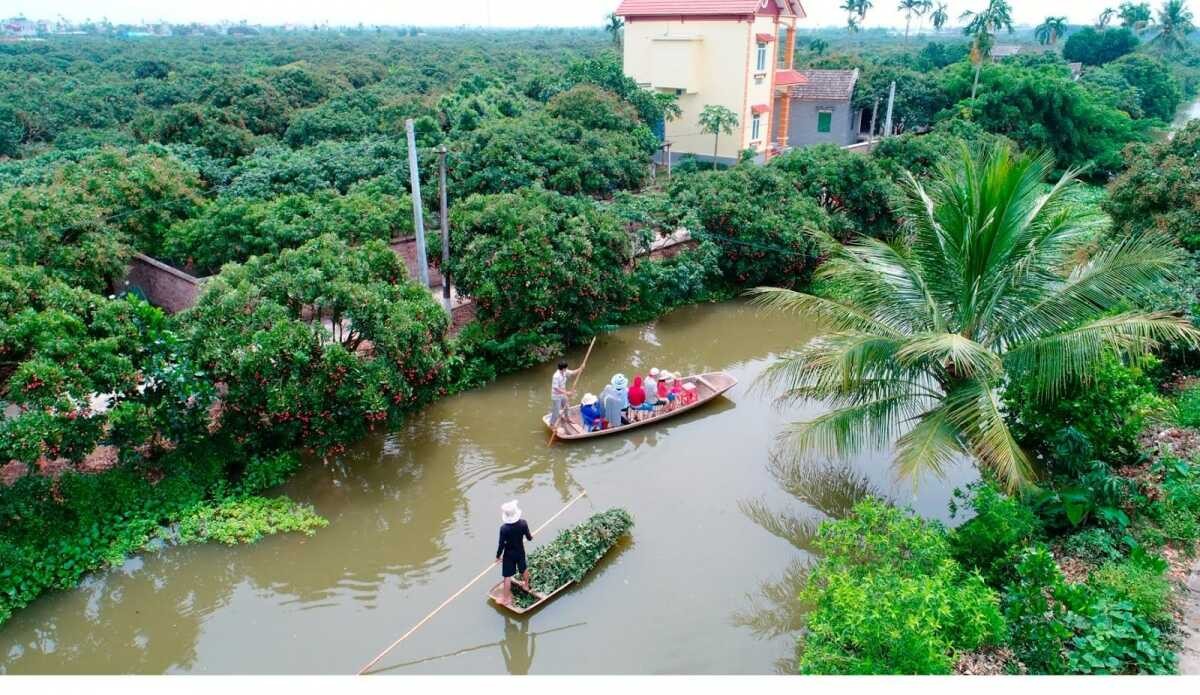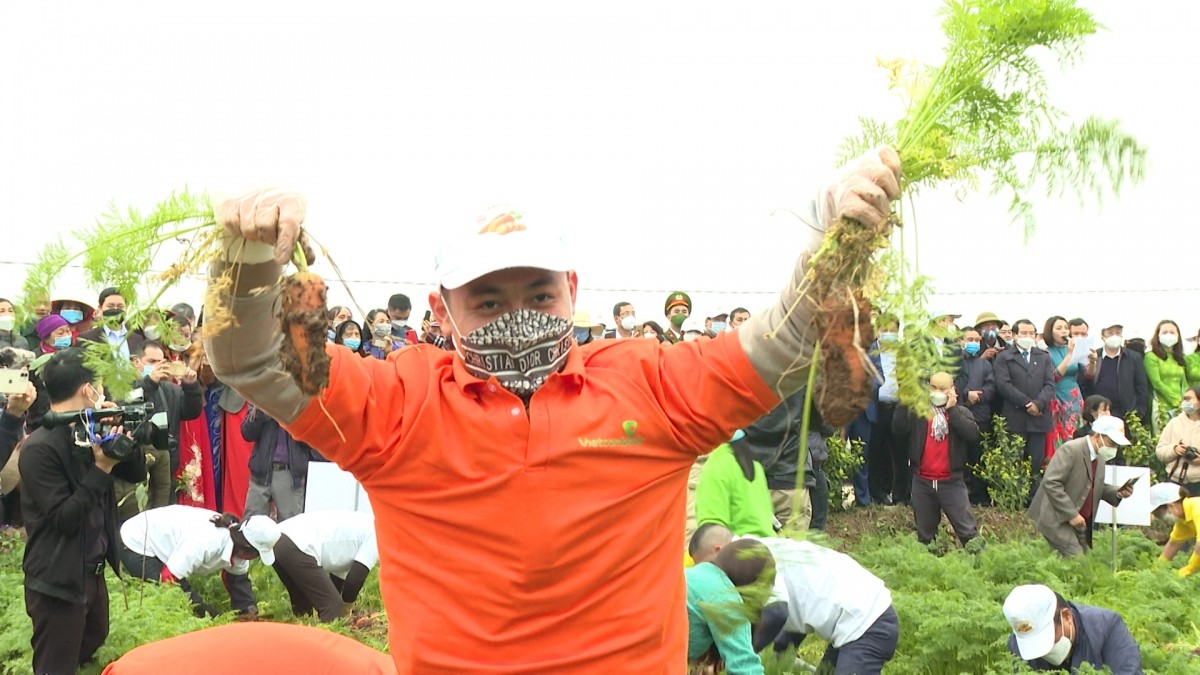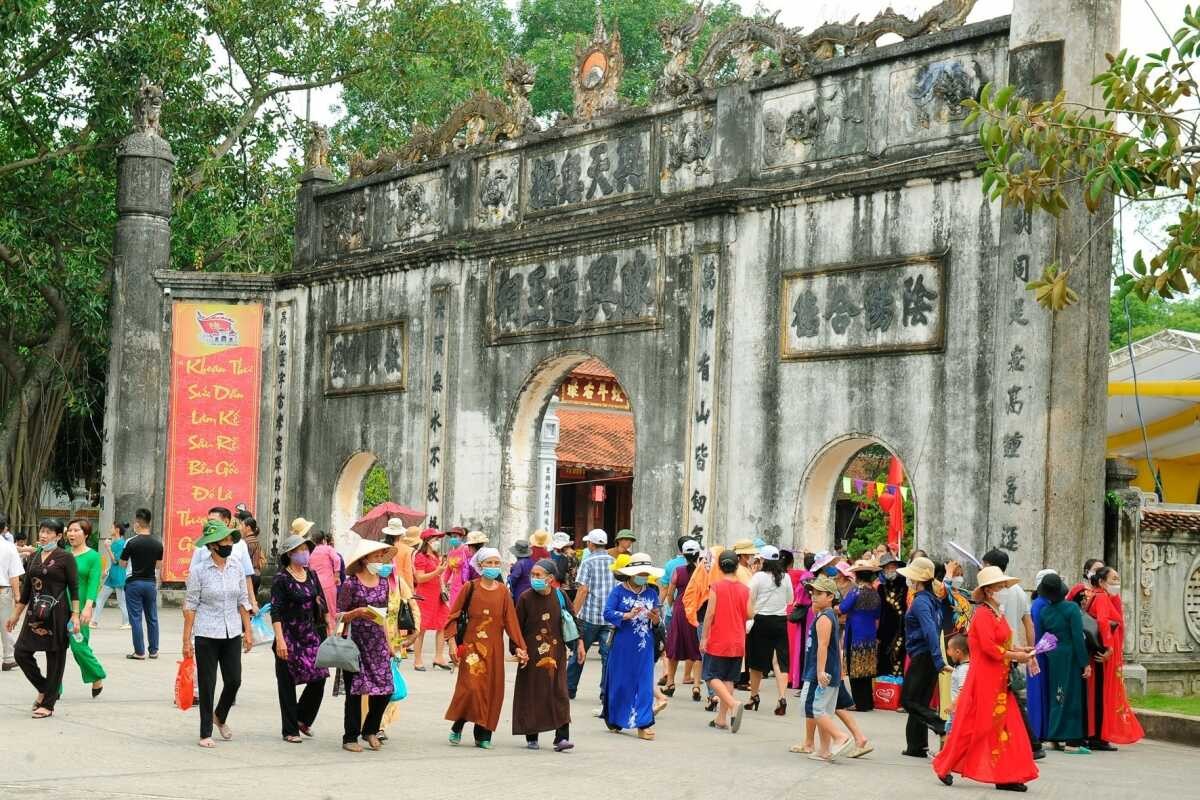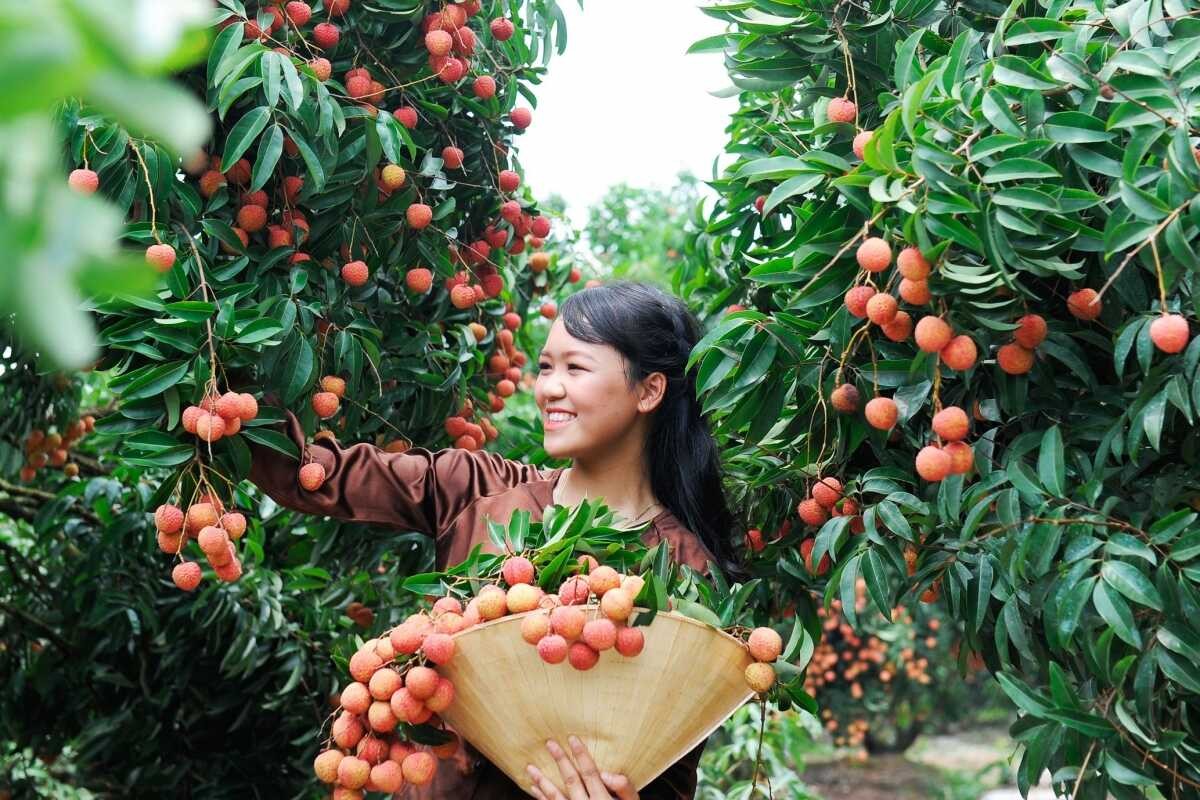The scenery of Con Son create a poetic beauty to the tourists.
Hai Duong is a land of plenty, blessed with captivating natural scenery and stunning attractions, such as Con Son and Kiep Bac Temple, which are well-known to many. Con Son, or Hun Mountain, is around 200 meters tall and 1 kilometer long, with more than 900 levels of stone winding through pine-covered hills, creating a beautiful and serene landscape. The scenery at Con Son is truly poetic, making it a must-see destination for tourists.
On top was remaining a relic of ancient architecture with the shape of a conical tower located in an even and flat area. Tree Hill rolls four sides, heading northeastward in the distance, winding across the verdant valleys and quiet, gentle villages. You will find yourself in Kiep Bac – a renowned historical monument.
 |
| Photo: VOV |
With its dense system of rivers connecting villages, fields, and nearly 7,000 hectares of fruit trees, Thanh Ha district in Hai Duong province is often referred to as the “miniature Mekong River Delta” of the East. In the peak lychee season, tourists are invited to take a boat ride along the rivers, capture picturesque views of the natural landscape, pick fresh lychees straight from the branches, and explore the two centuries-old lychee trees found in Thuy Lam village, Thanh Son commune.
This place is renowned for its vast array of both tangible and intangible cultural heritages, which have been part of the region for hundreds of years. Examples of these include folk performing arts, water puppetry, and the traditional festivals of Bach Hao Pagoda. There is much to explore and appreciate here, making this area a must-visit for any traveler.
 |
| Photo: VOV |
To further strengthen this effort, Thanh Ha district has implemented the project “Development of tourist attractions associated with Huong River eco-tourism in Thanh Ha in the period of 2021-2025”. Nguyen Van Vinh, Head of the Culture and Information Department of Thanh Ha district, noted that the project has achieved its first positive results, gradually turning tourism into an important economic sector in the area. He added that the project will continue to be implemented in the coming years, with the aim of promoting the potential of tourism in Thanh Ha.
Moreover, Nguyen Van Vinh highlighted that the project’s activities focus on developing tourist attractions associated with the Huong River eco-tourism, as well as fostering the local economy. He expressed his belief that the project will contribute to boosting the tourism industry in Thanh Ha, thereby creating more jobs and improving the lives of local people.
In conclusion, the implementation of the project “Development of tourist attractions associated with Huong River eco-tourism in Thanh Ha in the period of 2021-2025” is expected to be an effective way to promote the potential of tourism in the region.
In recent years, Dong Man (Thanh Khe commune) has seen a surge in tourism, with over 30,000 tourists visiting and roughly 40,000 coming to admire the ancient lychee trees, Nguyen Van Vinh said.
Agricultural tourism is a unique experience that capitalizes on the advantages and cultural attractions of the Red River Delta region in Hai Duong province. This area is renowned for its diverse, agricultural-based rural development and has developed a range of agricultural tourism products, including the Co Island eco-tour, various craft villages, the ruoi rice festival, and the Carrot Festival.
 |
| Photo: VOV |
The tourism products in Hai Duong are diverse yet lack connection and are not well-planned, hindering the success of agricultural and rural tourism in the area. To make these offerings more successful, it is essential to involve the people since they are key to crafting quality tourism products.
Vu Van Diep, an artisan living in Dong Giao, the renowned wood carving craft village in Luong Dien commune, Cam Giang district, Hai Duong, has expressed his concern that even though the village produces astonishingly beautiful products, it is still not widely known to tourists.
 |
| Photo: VOV |
In addition, the province has implemented a range of solutions to develop infrastructure, diversify tourism products and improve service quality.
The People’s Committee of Hai Duong Province has set a goal to welcome 2.5 million international tourists and 3.7 million domestic tourists by 2025. To achieve this ambitious target, the province has taken a number of steps to improve tourism products associated with local agricultural strengths, such as developing infrastructure and diversifying tourism products, as well as improving service quality and training high-quality tourism human resources. All of these measures are geared towards cultivating an environment that is conducive to tourism and ensuring that visitors have a great experience.
The East of Vietnam is a land of bountiful fruit orchards, rich in historical and cultural artifacts, home to vibrant festivals, and a convenient transport system. Moreover, the hospitable local people make it an ideal destination for agricultural-rural tourism. This has made tourism a major contributor to the economy of Hai Duong



